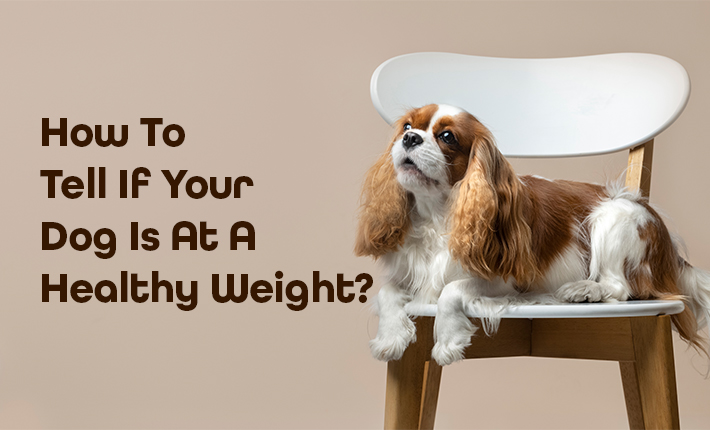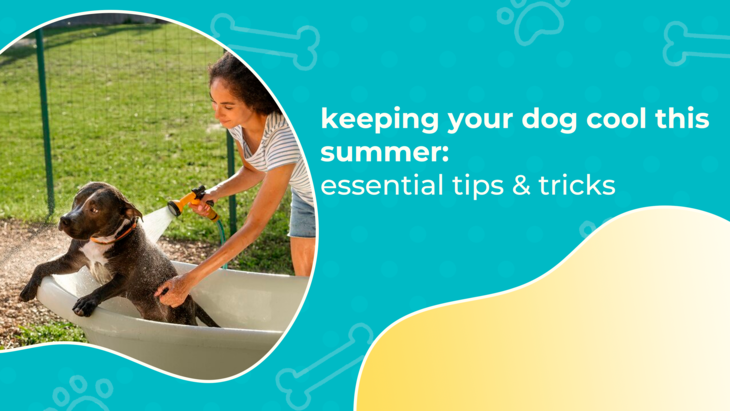Being overweight or underweight in dogs could indicate underlying health issues. And your dog could develop significant conditions that could lower the quality of their life if they aren't brought back to a healthy weight. Most pet centers and veterinary clinics offer a wide range of Pet care services to improve the dog's health and maintain nutrition.
Certain pet care centers offer Dogs care services where they conduct a complete health check and suggest remedies. However, if your pet dog has suddenly changed into a fat dog or if you find yourself staring at a notably underweight dog, there may be a problem.
For your dog's general health and welfare, you must keep them at a healthy weight. But all too frequently, we see dogs that are either a bag of bones or pudgy (presumably due to overeating and/or insufficient activity). However, if your pet dog has suddenly changed into a fat dog or if you find yourself staring at a notably underweight dog, there may be a problem.
Tips to Check If Your Dog Is At A Healthy Weight
Profile Analysis
Observe your dog from the side while they are in the "stand" position. You'll be looking for a well-defined abdomen. It's time to modify your dog's diet and activity if their tummy is at most their rib cage.
Rib Examination
The Rib Test is the simplest way to evaluate whether your pet is becoming too chubby. You just need to rub your hands along their sides to do it. To feel their ribs is desirable. It is time to modify your food and daily routine if you cannot.
Weigh Your Dog
A weigh-in at your veterinarian is the most reliable technique to determine whether your dog is overweight or obese. Depending on the size and breed of your dog, your veterinarian can then determine whether it is overweight.
Remember that every breed will have a different definition of a healthy weight. For instance, most sighthounds ought to have prominent ribs.
A body condition score chart that ranks a dog's body type by shape will be compared as they evaluate your dog's body and compare it to it. Scores typically range from one to nine, with one representing low weight and nine representing extremely high weight.
Food Changes
Before taking any action, it could be a good idea to have your vet examine your pudgy dog to ensure no underlying medical conditions contribute to the weight increase. If there is no medical cause, they suggest changing the person's diet to one with more fibre and less fat.
Smaller portions given more frequently can help your dog maintain a healthy diet while reducing daytime hunger. Allocate one or two additional servings per day to their daily allowance. They won't even notice you've cut back because they won't be as hungry in between feedings.
From their daily meal intake, set aside a fistful of kibbles for rewards. Add a few green beans or carrots. They have a low caloric content, are high in fibre, and will help your pet feel fuller more quickly.
Health Effects of Being Overweight
While having a portly puppy may appear cute, the extra weight can significantly impact the likelihood that the dog will experience health problems associated with obesity. Dogs who are overweight may acquire several major health issues, such as:
1. Diabetes
2. Skin problems
3. Heart problems
4. Joint problems
5. Kidney disease
6. Canine arthritis
7. Certain cancers
8. Liver problems
9. Mobility issues
10. Breathing problems
11. High blood pressure
What to Do if You Have an Overweight Dog?
Like people, your dog can lose weight by increasing exercise and reducing eating. The only activities overweight dogs engage in are walks to the garden to relieve themselves and reach their food bowl. It can be challenging to increase exercise. Therefore, they may require encouragement to start working out, lose weight, and gain muscle mass.
Depending on their age, breed, and condition, dogs require different amounts of exercise. Others may just require walks of 10–20 minutes once or twice daily, while some may require walks of 30–60 minutes twice to four times daily. Some dogs enjoy playing with toys, so they schedule time for it on their routine walks to burn off energy. They will benefit from this far into their senior years, keeping them healthy and content.
PetScape is a team of specialists with a lot of experience in pet health and nutrition. They suggest the best suitable exercises for unhealthy weight gain in dogs. Along with stepping onto the scale at the vet’s clinic to see if your pup weighs within a healthy range for their breed and age. You can also get an idea by looking at their overall body shape and feeling for their bones.
Because the weight increase is so gradual, dog owners frequently are unaware that their dog is overweight. Your vet will frequently bring up the issue instead. It is best to address the issue of weight increase before any diseases associated with obesity manifest.
Long-term health depends on keeping your dog at a healthy weight throughout life. They are more vulnerable to orthopaedic injuries, skin conditions, and even diabetes when overweight, which can also hasten the onset of arthritis in their limbs. If you detect unexplained weight increase or decrease, seek veterinary attention.







Post Comments